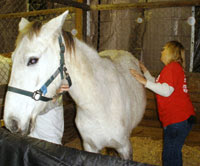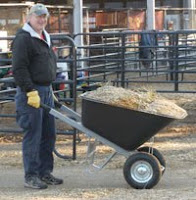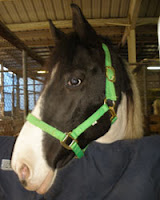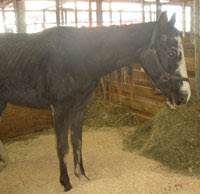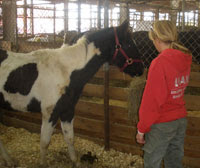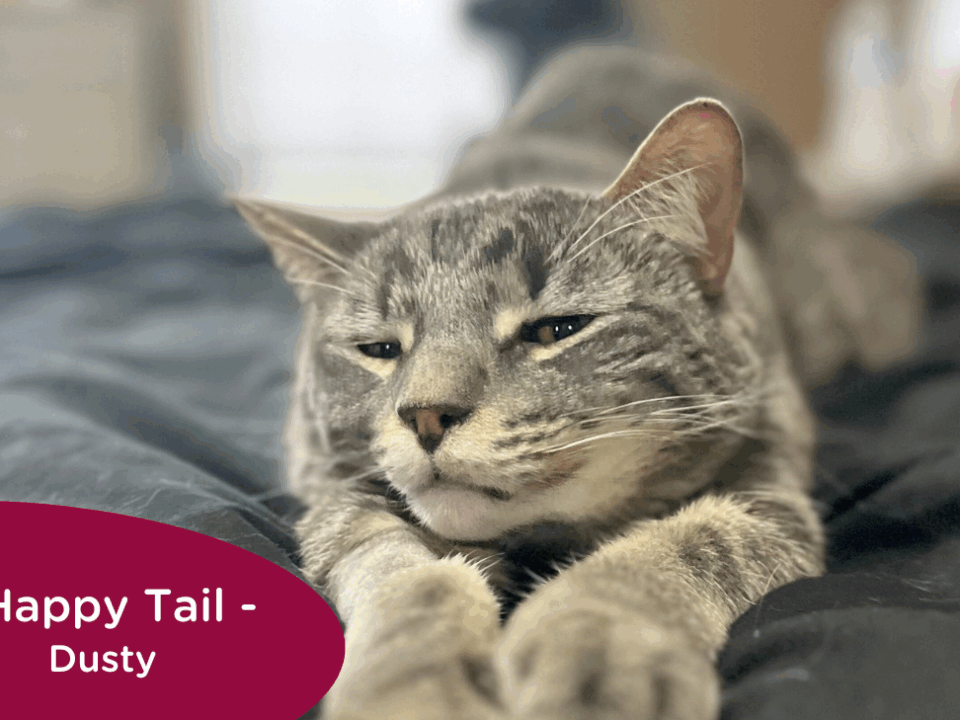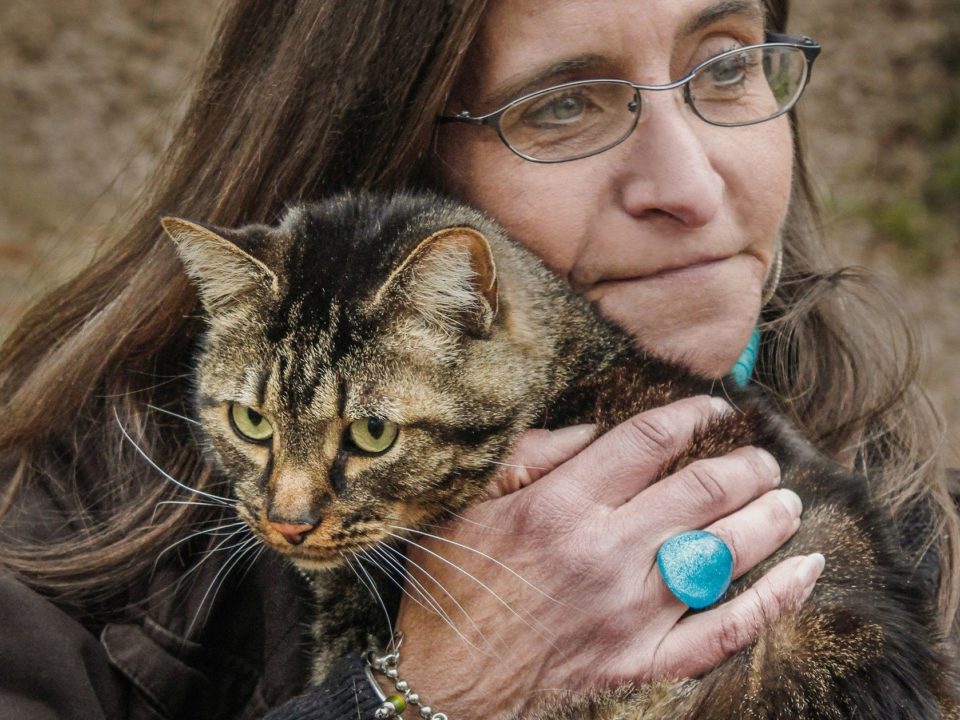Finally, happiness for the horses
December 21st, 2009
Submitted by Janell Matthies, UAN Emergency Services Manager
There were only 10 horses left at the temporary shelter on Friday. All the others had been adopted or transferred to rescue groups. As I walked through the barn watching the volunteers do morning chores and the remaining horses contentedly chew their hay, I was overwhelmed by how much had happened in Mule Barn #5 over the past 26 days.
I went back to Day #1, when we were all happily working, getting the stalls clear of nails and wires in preparation for 40 horses … then getting word it was 85 horses, 8 dogs, 15 chickens and 2 goats. We scrambled to affix heavy horse panels to each stall so they wouldn’t get out (little did we know it would take weeks for the horses to have the incentive, let alone ability, to move that much), unload all the animals (seeing up close the absolute neglect and devastation they had experienced), and then go through every step of their rehabilitation (emotionally and physically) alongside them. It seems unreal that it all happened there in that quiet, organized, happy barn.
There were so many memories. Long, 24-hour days, unloading truckful after truckful of hay and feed, colic, coughing, comfort, relief, more colic, exhaustion, horses down, seeing Longshot standing for the first time in the morning, anxiety, worry, compassion, hope, more worry. And finally, watching Blaze, Sassy, Sergeant, Calypso, Saint (trust me — he is NO saint!), Beauty, Longshot, Hotshot, Gandolf, Lakota, Midnight, Buddy and all the others leave for their new homes. Remembering it all leaves me flabbergasted, speechless.
Saving 84 horses from certain death took an army of people who gave everything they had. We started off with a skeleton crew of dedicated UAN and HSUS volunteers. They gave up their Thanksgiving holiday, family time and lazy days near the fire to help these horses, working a million hours a day doing hard, physical labor and still finding the energy to nurture, pet, talk to and love on each and every one of the horses.
These folks kept the horses alive. Finally we got re-enforcements and were able to go so far above and beyond basic care I think we may have accidentally spoiled some of the horses.
Longshot is a sweet and smart girl, but she was one of the weakest. I remained at the temporary shelter 24 hours a day for the first week and was keeping a careful eye on her. One morning I came in and as usual, she was down on the ground. But this time she was really down. She wasn’t trying to get up, her breathing was accelerated, her eyes looked blank, her tongue was pale. She had tried to get up a few times earlier, but just couldn’t do it. The scrape marks where her feet had slid through the bedding and the soiled shavings behind her told the story. I told the volunteers that we would be postponing our morning briefing. I didn’t say it, but privately I wanted to be with her when she died. I held her head in my lap and stroked her. I talked to her softly and watched her erratic breathing. She had only been down two hours, but she had nothing left in her.
After a bit, we gathered a Metro Police officer, our security guard, a kind man who was delivering horse feed, and a few other strong folks and began the process of lifting her. We had a system that required at least two people on each side, one on the tail and two on the head. The seven of us lifted her using fire hoses as slings and held her there. Her legs were literally dangling. Someone offered her food, another volunteer brought a water bucket to her, and others massaged her side to get the circulation going again. Eventually she stood on her own. This went on for weeks, until finally one morning, after leaving her for my two hour “nap” between 4 and 6 a.m., I came in and found her standing. From then on, if she went down and couldn’t get up, she would wait patiently until we assembled our crew, then allowed us to position her and lift her. She gave her all to help us help her. This was a dramatic change from the beginning, when she had no energy or desire to pull herself up at all. It took less and less effort to get her up each time. She lost that frantic look and began to trust us.
Then finally, Longshot stood on her own.
But that is not the entire story. Longshot had a neighbor in the barn who had no name. No Name witnessed Longshot’s ups and downs and closely watched everything we did to help her. Suddenly, Longshot’s neighbor was constantly down and not getting up. We began to worry about No Name. We assembled the crew, situated her and lifted her many times. After about the third time in less than 24 hours we noticed that when we counted “one, two, three” to lift, No Name would get up every time on the “two” count. After discovering this we watched more closely. Not only did she get up on “two” each time, she would nose toward her grain bucket, waiting for someone to hand-feed her, and turn her body toward the volunteers in anticipation of a massage. She is now named “Tease” and went home with a very experienced horse man (Tom) and his softy of a wife.
Our horses may have been on the brink of death, but they sure are smart. And now, they are ready to be loved as well.

